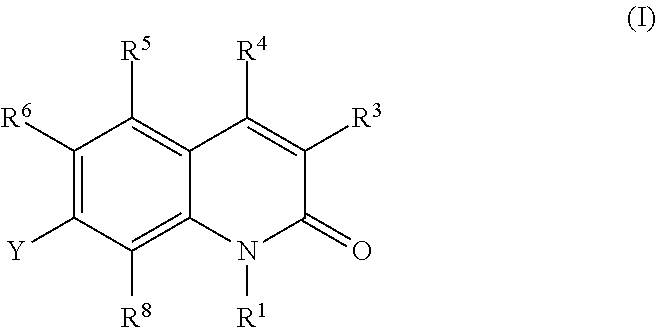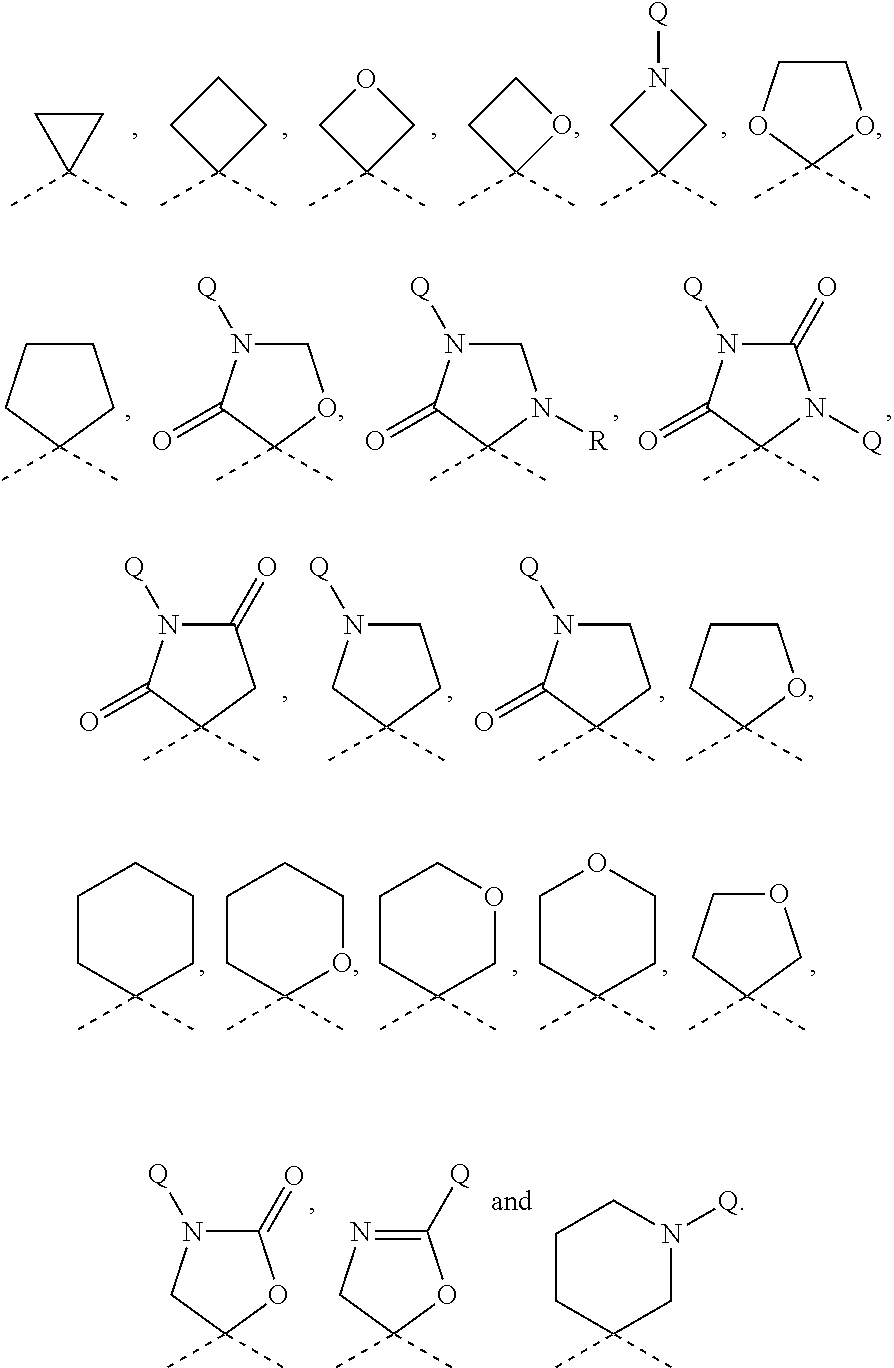Quinolone derivatives as antibacterials
a technology of quinolone derivatives and antibacterials, applied in the field of medicinal chemistry, can solve problems such as threatening their future long-term utility, and achieve the effect of treating or lessening the severity of bacterial infections, and reducing the severity
- Summary
- Abstract
- Description
- Claims
- Application Information
AI Technical Summary
Benefits of technology
Problems solved by technology
Method used
Image
Examples
example 1.1
S)-1-aminoethyl)pyrrolidin-1-yl)-1-cyclopropyl-6-fluoro-8-methyl-2-oxo-1,2-dihydroquinoline-3-carboxylic acid hydrochloride salt
[0349]
[0350]The title compound was prepared in accordance with the following scheme:
(i) (S)-tert-butyl (1-(methoxy(methyl)amino)-1-oxopropan-2-yl)carbamate
[0351]To a solution of (S)-2-((tert-butoxycarbonyl)amino)propanoic acid (10.0 g, 52.9 mmol), N,O-dimethylhydroxylamine hydrochloride (7.7 g, 78.9 mmol) and TEA (22.0 g, 217.4 mmol) in DMF (100 mL) was added HATU (30.0 g, 78.9 mmol). The reaction mixture was then stirred at 20° C. for 10 h. After the reaction was complete, the reaction mixture was concentrated under reduced pressure. The residue was dissolved in EtOAc (50 mL), washed with sat. aq. Na2CO3 (150 mL) and brine (100 mL). The water phase was extracted with EtOAc (2×200 mL). The combined organic extracts were dried over Na2SO4, filtered and concentrated under reduced pressure to give a crude product. The crude product was recrystallized form EtOA...
example 1.2
S)-1-aminoethyl)pyrrolidin-1-yl)-1-cyclopropyl-6-fluoro-8-methyl-2-oxo-1,2-dihydroquinoline-3-carboxylic acid hydrochloride salt
[0406]
[0407]The title compound was prepared in accordance with the following scheme:
(i) 7-((S)-3-((S)-1-((tert-butoxycarbonyl)amino)ethyl)pyrrolidin-1-yl)-1-cyclopropyl-6-fluoro-8-methyl-2-oxo-1,2-dihydroquinoline-3-carboxylic acid
[0408]To a solution of ethyl 7-((S)-3-((S)-1-((tert-butoxycarbonyl)amino)ethyl)pyrrolidin-1-yl)-1-cyclopropyl-6-fluoro-8-methyl-2-oxo-1,2-dihydroquinoline-3-carboxylate (7 mg, 0.014 mmol) in THF (0.5 mL) and H2O (0.5 mL) was added NaOH (1 mg, 0.028 mmol). The reaction mixture was stirred at 30° C. for 4 h. After the reaction was complete, the reaction mixture was diluted with water (5 mL) and acidified with aq. HCl (0.1 mol / L) to pH=4-5. The resulting mixture was extracted with EtOAc (5 mL×3). The combined organic phases were dried over anhydrous Na2SO4 and concentrated to give the crude product (6 mg), which was used in the next ...
example 1.3
yrrolidin-1-yl)-1-cyclopropyl-6-fluoro-8-methyl-2-oxo-1,2-dihydroquinoline-3-carboxylic acid hydrochloride salt
[0418]
[0419]The title compound was prepared in accordance with the following scheme:
(i) Ethyl 7-(3-((tert-butoxycarbonyl)amino)pyrrolidin-1-yl)-1-cyclopropyl-6-fluoro-8-methyl-2-oxo-1,2-dihydroquinoline-3-carboxylate
[0420]To a solution of ethyl 7-bromo-1-cyclopropyl-6-fluoro-8-methyl-2-oxo-1,2-dihydroquinoline-3-carboxylate (80 mg, 0.22 mmol) in toluene (8 mL) was tert-butyl pyrrolidin-3-ylcarbamate (52 mg, 0.28 mmol), Cs2CO3 (212 mg, 0.65 mmol), Pd2(dba)3 (30 mg, 0.033 mmol) and Xantphos (6.4 mg, 0.011 mmol). Then the reaction mixture was stirred at 120° C. for 18 hours. After the reaction was complete, the reaction mixture was diluted with EtOAc (20 mL) and filtered. The filtrate was concentrated in vacuum. The residue was purified by prep. TLC (Developer: PE:EtOAc=1:1) to give the product (20 mg, yield: 19.4%) as a yellow solid.
[0421]1H NMR (400 MHz, CDCl3-d1) δ 8.16 (s,...
PUM
 Login to View More
Login to View More Abstract
Description
Claims
Application Information
 Login to View More
Login to View More - R&D
- Intellectual Property
- Life Sciences
- Materials
- Tech Scout
- Unparalleled Data Quality
- Higher Quality Content
- 60% Fewer Hallucinations
Browse by: Latest US Patents, China's latest patents, Technical Efficacy Thesaurus, Application Domain, Technology Topic, Popular Technical Reports.
© 2025 PatSnap. All rights reserved.Legal|Privacy policy|Modern Slavery Act Transparency Statement|Sitemap|About US| Contact US: help@patsnap.com



